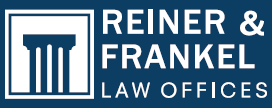As early as mid-winter, firefighters in California are already gearing up for a potentially bad fire season, which would typically start in late spring. In fact, this January, Cal Fire crews fought a 300-acre wildfire in Lake County. Then in mid-February, an even larger 400-acre fire broke out in Inyo County, which lies just east of Fresno. Cal Fire spokesperson Dennis Mathison blames the lack of rainfall for what could possibly be a very busy year for firefighters; he says that January and February were the driest ones ever recorded in Northern California since the 1920s.
Populations living in Redding, which lies in what is categorized as a wildlife/urban interface fire area, have to be extra vigilant when it comes to observing fire safety during these times and the coming months ahead. This year’s round of prescribed burnings have already started, and more are scheduled over the coming weeks. As of February 28, crews at Whiskeytown National Recreation Area just finished a controlled burn over 98 acres of pine and oak woodland. Another prescribed burn is scheduled on March 6-7, this time near Packers Bay. It is planned to cover around 150 acres.
The California Environmental Protection Agency (EPA) defines prescribed burning or controlled burning as “the intentional use of fire to reduce wildfire hazards, clear downed trees, control plant diseases, improve rangeland and wildlife habitats, and restore natural ecosystems.” Every year, about 150, 000 acres of wildland are treated by controlled burning. Controlled burns or prescribed burning has its uses in the California landscape. When performed during the cooler months, it can greatly reduce fuel build-up and lessen the severity of summer wildfires. There are even some environmental studies which show that prescribed burning also helps with the germination of desirable tree species; the heat from the fire encourages the opening of pine cones so that its seeds could disperse.
Despite the benefits, controlled burns can easily turn into a disaster, as what happened in 2006 when strong winds rekindled a controlled burn in Orange County, CA days after it was declared to be out. The blaze, which was originally prescribed for only about 10 acres, grew to more than 8,000. In the past, motor accidents have also occurred due to thick smoke impairing road visibility.
To reduce the risk to life and property, residents have to make sure that all buildings conform to fire safe construction standards set by Fire and Building Departments of Redding. Also keep yourself and your family updated with the schedules for controlled burning projects and on the progress of ongoing prescribed burns.
Residents should also note requirements governing open burning projects in the community. For instance, a burn authorization is required for all open burning projects inside the city limits and within fire districts Redding, Anderson, Cottonwood, Buckeye, and Shasta Lake. Permits are issued by the respective fire departments of each district, and a fee may be required.
To minimize the risk of a prescribed burn turning into a disaster, observe the following guidelines:
- A prescribed burn should only be planned and attempted under the guidance of a qualified burn manager; the burn manager is someone proven to be knowledgeable about fire behavior, fire and smoke management, burning laws, and animal and plant responses. For example, juniper trees tend to throw a lot of embers while burning, which is something to be considered.
- Plan every aspect of the burn well in advance, and make sure that fireguards are in place. Be aware of the limitations of each fireguard.
- Do not conduct a burn when weather conditions are not ideal, such as when wind direction changes are expected, when wind conditions are variable or too strong, or when humidity is too low.
- Consider the impact of smoke on the surrounding areas. Smoke causing zero visibility in nearby highways or airports can cause severe traffic hazards. Smoke can also kill people with respiratory problems, so do not plan a burn near hospitals, nursing homes, schools. Or residences.
- Burns should only be conducted during daytime; the burn manager and the crew should patrol the perimeters to ensure that the fire remains within the intended area.
The California Air Resources Board in 2004 has issued a state-wide prohibition on the use of burn barrels and the burning of any materials other than dried vegetation except in these census zip code areas: Big Bend (96011), Castella (96017), Old Station (96071), Platina (96076), Round Mountain (96084), and Whiskeytown (96095). Garbage, paper or cardboard, and other materials that might cause a public nuisance are not allowed to be burned. Green vegetation has to be air dried before burning and it is not recommended to burn leaves or lawn clippings. Note that burning can only be done on “Permissive Burn Days’ as determined by the local Air Pollution Control District (APCD) or by the State Air Resources Board. Violations of any burning permit terms are considered as a violation of state law.
